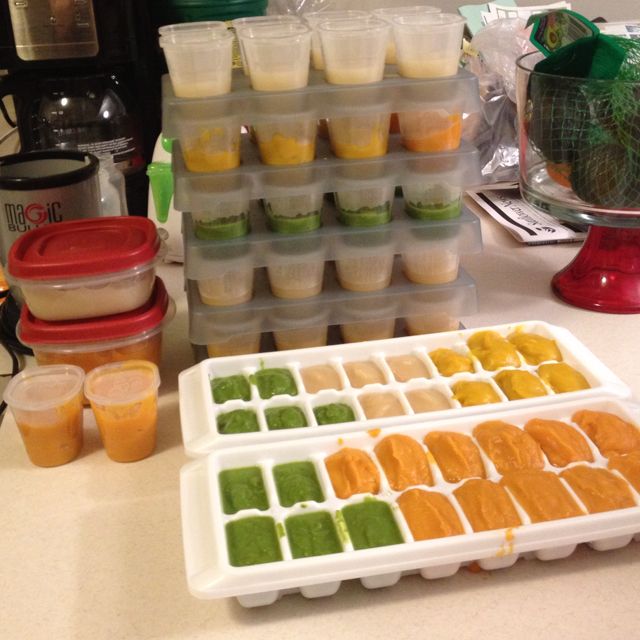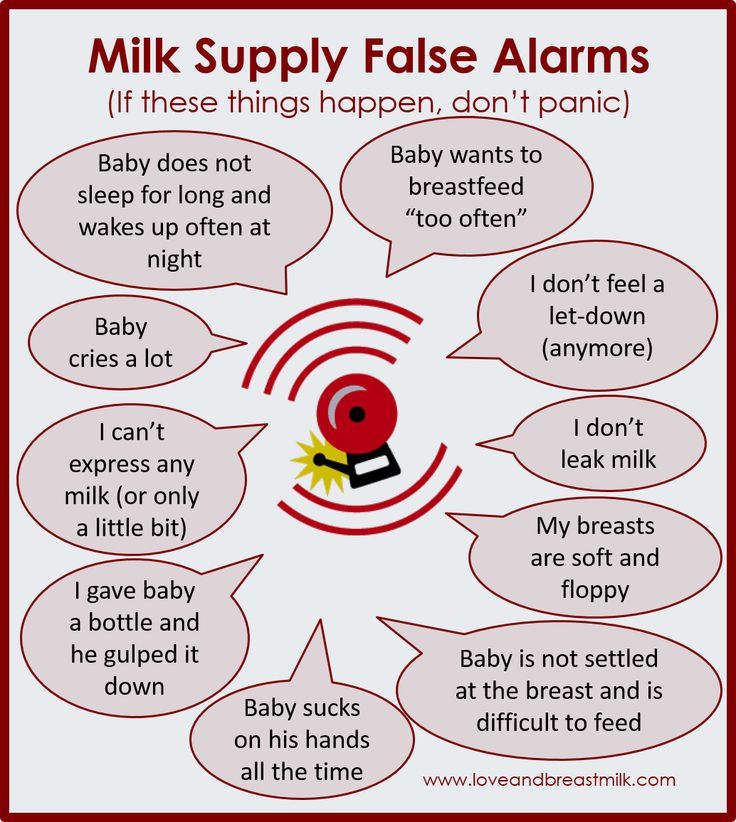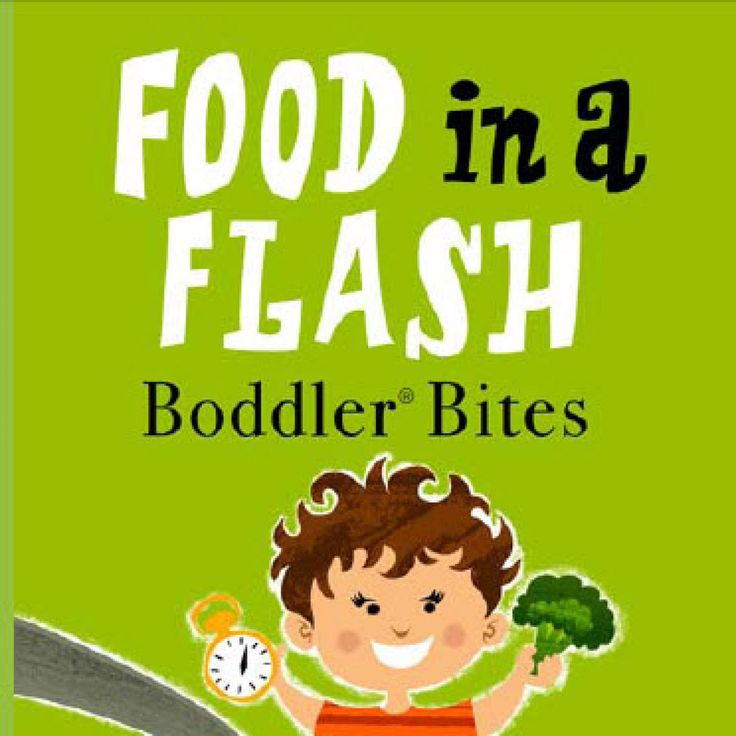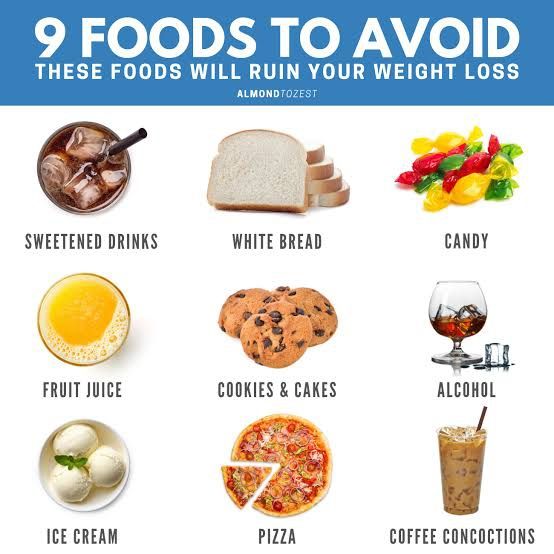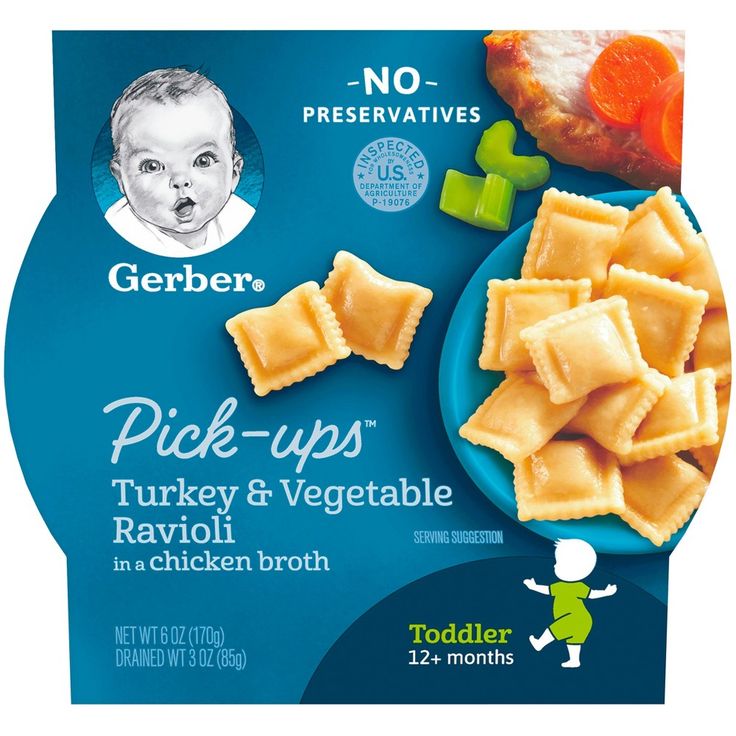How to make homemade baby food squash
Butternut Squash Baby Food (Stage One)
This homemade Roasted Butternut Squash Baby Food Puree recipe not only contains calcium, folate, fiber, and vitamins A and C, but it is also a deliciously smooth way to introduce butternut squash to your baby! It’s a great Stage 1 baby food for 4-6 months and up!
Medically reviewed Jamie Johnson, Registered Dietitian Nutritionist (RDN), and Lauren Braaten, Pediatric Occupational Therapist (OT).
Butternut Squash Baby FoodThis butternut squash puree is a quick and simple recipe that involves roughly 5 minutes of hands-on time! 🖐
We’ll let the oven do all the hard work for the rest of the prep time. Cuz why should we work harder 💪 when we can work smarter? 🙋♀️
Butternut squash contains calcium, folate, fiber, and vitamins A and C and is considered one of the very best first foods for your baby.
Is it your first time making homemade baby food? Then I suggest you start this journey by reading my in-depth Guide on How to Make Homemade Baby Food. The detailed guide goes over all the important information such as the best cooking tools to have on hand, safe storage, how to know when baby is ready for solids, how to introduce purees, the best first foods for baby, and more! You can also check out my best-selling cookbook for even more information and recipes!
Butternut Squash Video
Watch this video to see just how easy it is to make this delicious puree for your baby!
Reasons to Love this Butternut Squash Puree- creamy and smooth
- great for 4-6+ months
- stage one baby food
- healthy — full of essential nutrients for your baby
- easy to make — requires only 5 minutes of hands-on time
- babies will love the sweet and earthy taste
- homemade
- freezer-friendly
- budget-friendly
Health Benefits of Butternut Squash
- High levels of antioxidants and vitamins A and C, which boosts the immune system and reduces inflammation
- A good source of potassium that helps keep bones healthy
- Contains a protein that may be a potent anticancer agent
- Provides calcium to help strengthen bones and folate to help with brain development
Make sure to read the recipe card below for full ingredients and instructions!
- Butternut Squash: This is an easy-to-find, inexpensive, and nutritious food for your baby! When selecting butternut squash, look for a firm squash that has a solid beige color skin without bruising or damage marks.
 The insides will range from bright yellow to burnt orange, so don’t be alarmed if yours is somewhere in that color range.
The insides will range from bright yellow to burnt orange, so don’t be alarmed if yours is somewhere in that color range. - Thyme or Rosemary: We are kicking up the flavor profile with a fun and fresh herb — thyme or rosemary. Either of these herbs will tone down the earthiness of the squash and ramp up its freshness and citrus aspect. You can’t go wrong with either. But you can always skip adding herbs and spices to your baby food if you prefer (see more below).
Adding Healthy Fats Tip: If you are looking to add some extra healthy fat to your baby’s meals, then you can drizzle the butternut squash with extra virgin olive oil before roasting. Olive oil is a healthy fat that is full of omega 3 and omega 6 that helps baby absorb vitamin D which is important for bone growth and strengthening.
Tools NeededThese tools will make it a lot easier for you to make this healthy Sweet Potato puree. For more of my favorite kitchen tools make sure to check out my online shop.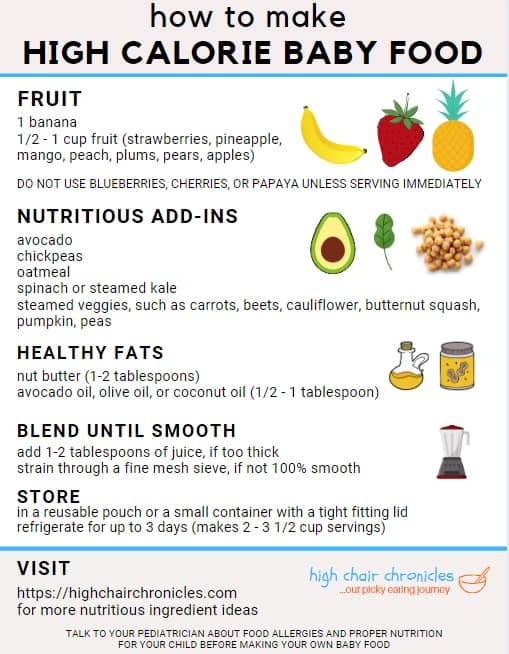
- Baking Sheet
- Blender or Food Processor
- Knives
- Freezer Tray
- Storage Containers for Fridge
- Stasher Bag
- Bib with catch pocket
- Reusable pouches
- Heat Oven: Preheat the oven and line a baking sheet.
- Prep Squash: Cut the butternut squash in half and scoop out the seeds. Place them on the baking sheet with the flesh side down, and brush with olive oil (optional).
- Bake: Place the baking sheet in the oven and bake until easily pricked with a fork.
- Scrape: Let it cool, and then scrape off the skin until you only have the butternut squash left. Add to the blender or food processor.
- Add Herbs: Add in a pinch of thyme or rosemary to the butternut squash.
- Puree: Turn on the blender and puree until smooth, adding liquids if needed.
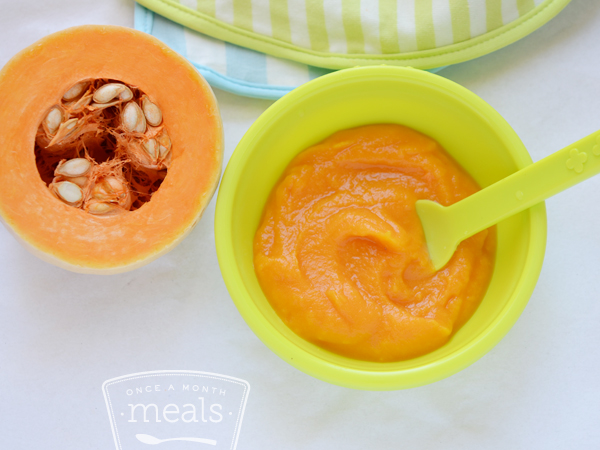
- Serve or freeze for another meal.
While I love the earthly, caramel flavor of roasted butternut squash, there are several ways you can cook butternut squash for baby food.
SteamingPeel and roughly chop 1 butternut squash. Place the cubes into a steamer basket over 2 inches of boiling water for 10-15 minutes or until tender when pricked with a fork. Puree in a blender as directed below.
BoilingPlace 1 peeled and roughly chopped butternut squash into a medium saucepan, add enough water to cover the butternut squash, and bring to a boil. Reduce to simmer and cook for 7-10 minutes or until tender when pricked with a fork. Puree in a blender as directed below. Note that boiling the butternut squash decreases the nutritional value of the puree since a lot of the nutrients are thrown out with the water after cooking.
Saving Time Tip: Steaming or boiling butternut squash are great methods to use if you are using prepared or frozen butternut squash. I have found both peeled and cubed fresh or frozen butternut squash in my grocery store, which are both viable options if you are short on time.
I have found both peeled and cubed fresh or frozen butternut squash in my grocery store, which are both viable options if you are short on time.
Frequently Asked Questions
Can butternut squash be baby’s first food
Butternut squash can 100% be your baby’s first food if you want it to be. It is recommended to wait to introduce the top eight allergen foods to your baby once a few other well-tolerated foods have been introduced, but otherwise, foods can be introduced in any order so choose whatever you are most excited for your baby to have.
Is butternut squash a common allergen for baby?
No, butternut squash is not a common allergen, however, as with any food, start with a small portion and be aware of any signs that might be an allergic reaction after introducing it.
When can baby eat butternut squash?
Babies can have butternut squash as one of their first foods.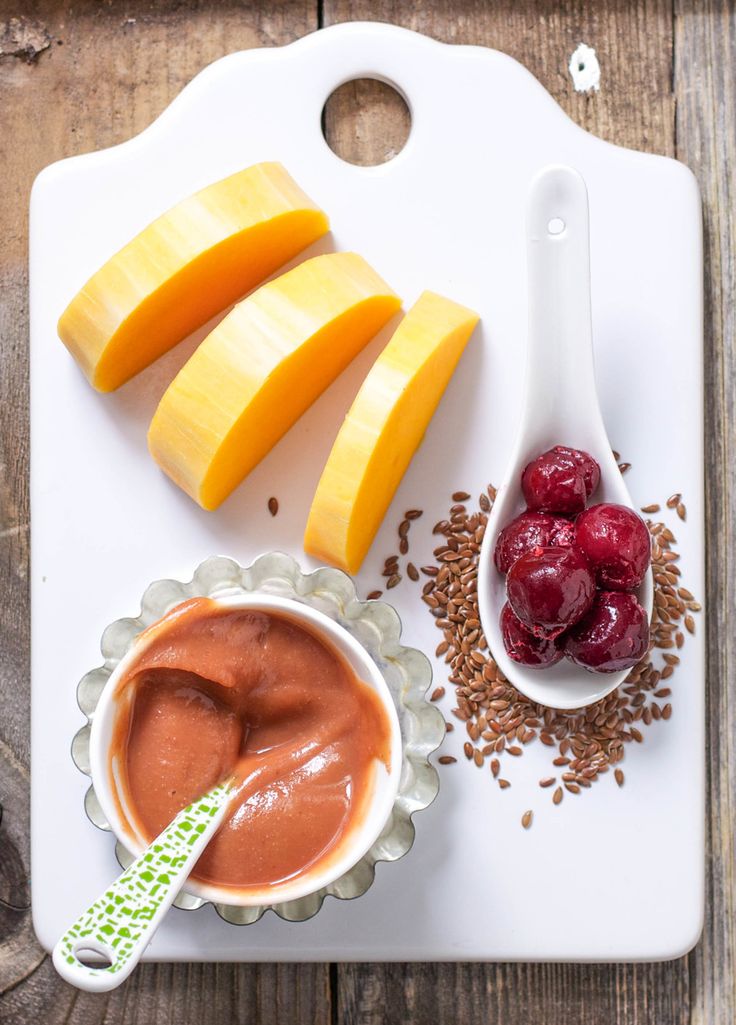 When a baby can start on solids is determined by their own rate of development, which generally comes between 4-6 months of age. Some of the developmental milestones babies need to reach in order to start solids include: if your baby has solid control of their head and neck, if your baby has doubled in weight, and if your baby is reaching for or opening their mouth when you eat (see my guide here). Before you start your baby on purees, you should consult with your pediatrician to make sure your child is developmentally ready.
When a baby can start on solids is determined by their own rate of development, which generally comes between 4-6 months of age. Some of the developmental milestones babies need to reach in order to start solids include: if your baby has solid control of their head and neck, if your baby has doubled in weight, and if your baby is reaching for or opening their mouth when you eat (see my guide here). Before you start your baby on purees, you should consult with your pediatrician to make sure your child is developmentally ready.
Can you add spices or herbs to this baby puree?
Yes! You can add in a pinch of chopped rosemary to this recipe, but feel free to use the following spices instead: basil, cilantro, ginger, nutmeg, coriander, mint, cinnamon, or mild curry powder (see quantity recommendations in the recipe card).
Tip on Spices: I always add spices or herbs to my baby food purees, but you can choose to leave them out in all of your baby food.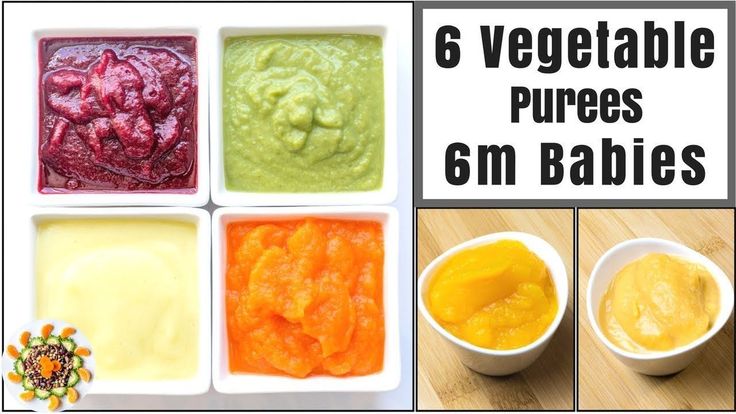 You do you! Either way, this puree will surely taste amazing.
You do you! Either way, this puree will surely taste amazing.
Does butternut squash cause constipation for babies?
Butternut squash, though unlikely, may cause constipation in some babies, so avoid giving too much.
How to Store Butternut Squash Baby FoodRefrigeratorYou can store this puree in an airtight container in the fridge for up to 4 days.
FreezerThis puree can be frozen for up to 4 months.
- Spoon puree into a freezer storage container– do not overfill.
- Place the lid on the storage container or cover with a piece of saran wrap, and label with the date and recipe name.
- Place the tray into the freezer and let it freeze completely — preferably overnight.
- Pop-out the baby food cubes and place them in a ziplock baggie or stasher bag. Don’t forget to relabel the baggie or stager bag for future reference.

Need more information on how to store your baby foods? Head over to my Best Baby Food Storage Containers – Plus 6 Tips on Freezing and Thawing post!
Label Tip: Don’t forget to label your purees before you place them in the fridge or freezer with the name of the puree and the date you made it. Take it from me; by the end of the week, you will completely forget what is in your freezer and how long it’s been there. 😉
Puree Feeding Tips
- Follow your baby’s lead – when feeding purees from a spoon, sometimes there’s a tendency to keep offering bites past the point of your baby being full. Always follow baby’s cues for when they are done eating. Turning away from the spoon, closing her mouth, or pushing food away are all signs that baby is finished with the meal.
- Trial adding a little seasoning or spice to purees – babies like flavor! Or consider changing the temperature of purees from time to time, to slightly warmed or slightly chilled.
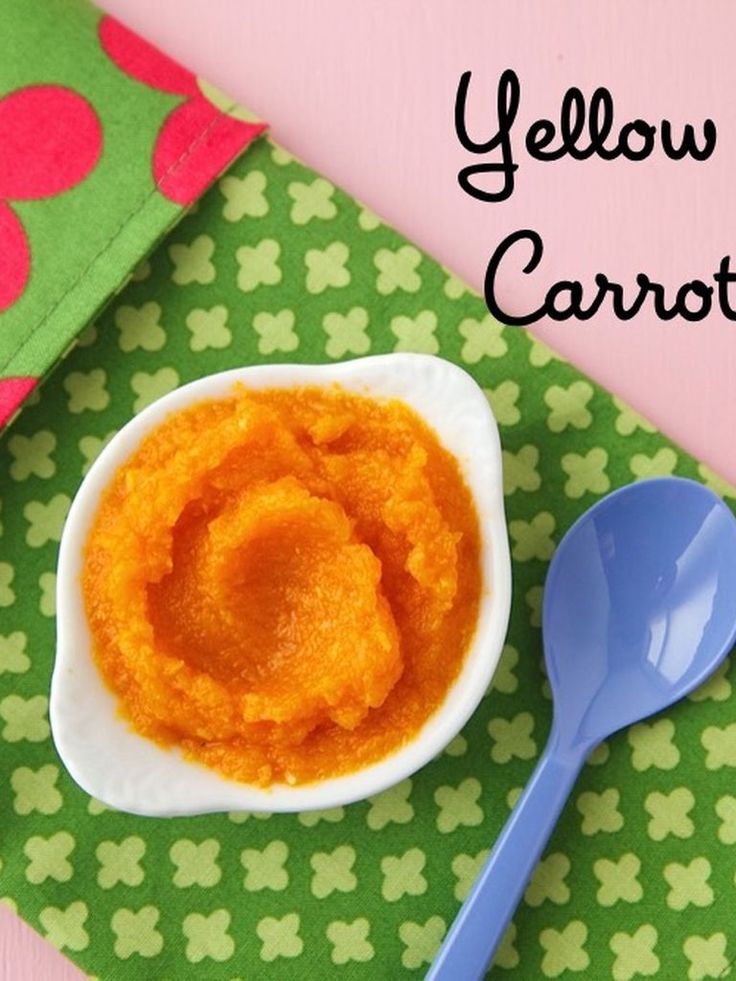 Varying these aspects adds to the sensory experience!
Varying these aspects adds to the sensory experience! - Place a small amount of puree on the tray during spoon feeding, so that your baby can dip their fingers or hands in the puree. Allowing baby to explore foods in this way helps them learn to self-feed and can help them be more willing to try new textures and foods in the future.
While this butternut squash puree is tasty by itself, it’s also super easy to mix and match with other nutrient-dense baby food purees. So give these fun flavor combos a try!
- Apples
- Carrots
- Pears
- Cherries
- Quinoa Baby Cereal
- Chicken
- Corn
- Sweet Potato
- Soft Tofu
- Pumpkin
- Mango
- Cauliflower
- Yogurt
I’D LOVE TO KNOW HOW IT TURNED OUT! LEAVE A COMMENT AND A ⭐️ RATING BELOW 👇
Or watch a shortened version of the video here.
- 1 butternut squash
- 1 tsp fresh thyme or rosemary, roughly chopped
- 1-2 tsp olive oil (optional)
- 1/2-1 cup liquid (water, fresh breast milk, formula, stock or bone broth)
Preheat: Heat oven to 450 degrees F. Line baking sheet with a silicone mat, tin foil or parchment paper.
Prep: Cut butternut squash in half, deseed and place flesh side up, skin side down on the baking sheet. Optional – feel free to drizzle the squash with 2 teaspoons of olive oil for some added healthy fat.
Roast: Place the baking sheet into the oven and bake for 45-60 minutes or until you can easily prick the squash with a fork.
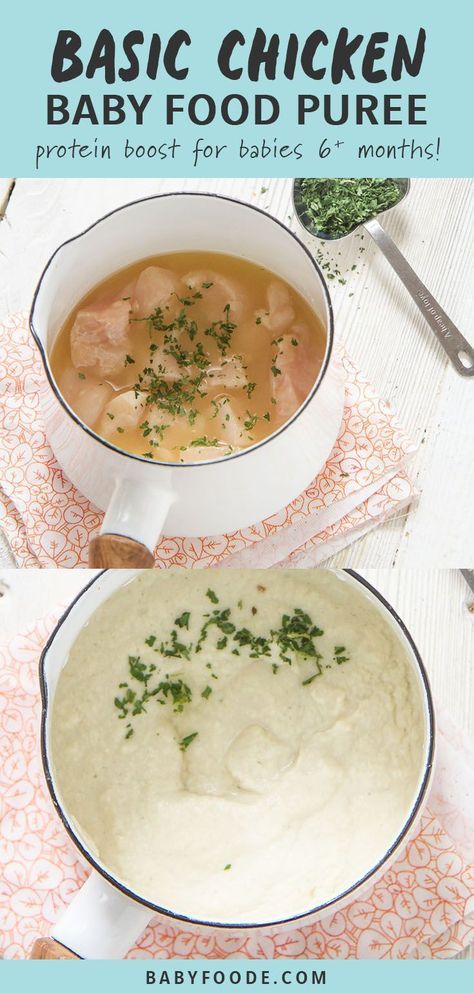
Peel: Let cool until you can handle the squash with your hands. Scrape the flesh off of the skin and place in a blender or food processor.
Add Herbs: Add the thyme or rosemary to the blender.
Puree: Turn on the blender or food processor and puree, adding liquid in 1/4 cup increments until you have the desired consistency. I had to add in 3/4 cup of water to my puree shown below.
Eat: Serve or freeze for later.
Age: 4-6 months and up
Yield: 25 ounces
Additional Spices: Feel free to sub the thyme or rosemary for 4 chopped basil leaves, 1 tsp chopped cilantro, 1/2 tsp minced fresh ginger, 1/2 teaspoon nutmeg, 1/2 tsp coriander, 1/2 tsp cinnamon or even 1/2 tsp of mind curry powder.
Freezer Tray
Blender
Silicone Baby Bibs
Bumkins Baby Bowl
Tripp Trapp High Chair
GreenPan Cookware
Did you make this recipe?
Tag @babyfoode on Instagram and hashtag it #babyfoode!
Pin Recipe Email a Friend
Baby food: Squash purée Recipes
This squash purée baby food is great for weaning, and packed with vitamins.
From six months onwards you can start the gradual process of weaning your baby onto solids. While it's an exciting milestone, knowing where to start can seem a bit daunting. Apart from the obligatory baby rice, single vegetable purée is a good first food and the sweet, mildness of butternut squash is a first flavour your baby is likely to enjoy. Its soft flesh can be puréed completely smooth and the consistency can easily be loosened with some of your baby’s regular breast or formula milk. By around eight months, your baby will probably have become a dab hand at slurping and swallowing, at which point you can begin to leave the purée with slightly more texture. Get more advice from our baby weaning guide.
Get more advice from our baby weaning guide.
Ingredients
- 1 butternut squash
WEIGHT CONVERTER
I want to convert...Choose the ingredientWaterMilkWineAlmonds (Flaked)Almonds (Ground)Breadcrumbs (Fresh)Breadcrumbs (Dried)Brown Sugar (Light & Dark)ButterCaster SugarCherries (Canned)Cherries (Dried/ Maraschino)Cherries (Glace/ Candied)Cocoa PowderCornflourCream CheeseDried ApricotsGranulated SugarGrated ParmesanGrated CheddarHazelnuts (Whole)Hazelnuts (Chopped)Hazelnuts (Ground)HoneyIcing SugarMargarineOats (Rolled)Oats (Scottish)Oats (Steel Cut)Oats (Quick/ Quaker)Oats (Instant)Peas (Frozen)Peas (Cooked)Pecans (Chopped)FlourRice (Uncooked, Long-grain)Rice (Uncooked, Medium-grain)Rice (Uncooked, Short-grain)Rice (Uncooked, Basmati)Rice (Uncooked, Wild)Shredded CoconutSultanasSyrup (Cane)Syrup (Chocolate)Syrup (Corn)Syrup (Corn, High fructose)Syrup (Golden)Syrup (Maple)Table SaltTomatoes (Canned)Tomatoes (Chopped)Tomatoes (Sun-dried)Treacle / MolassesWalnuts (Chopped)
grams
cups
Method
- Cut butternut squash in half, scoop out seeds.
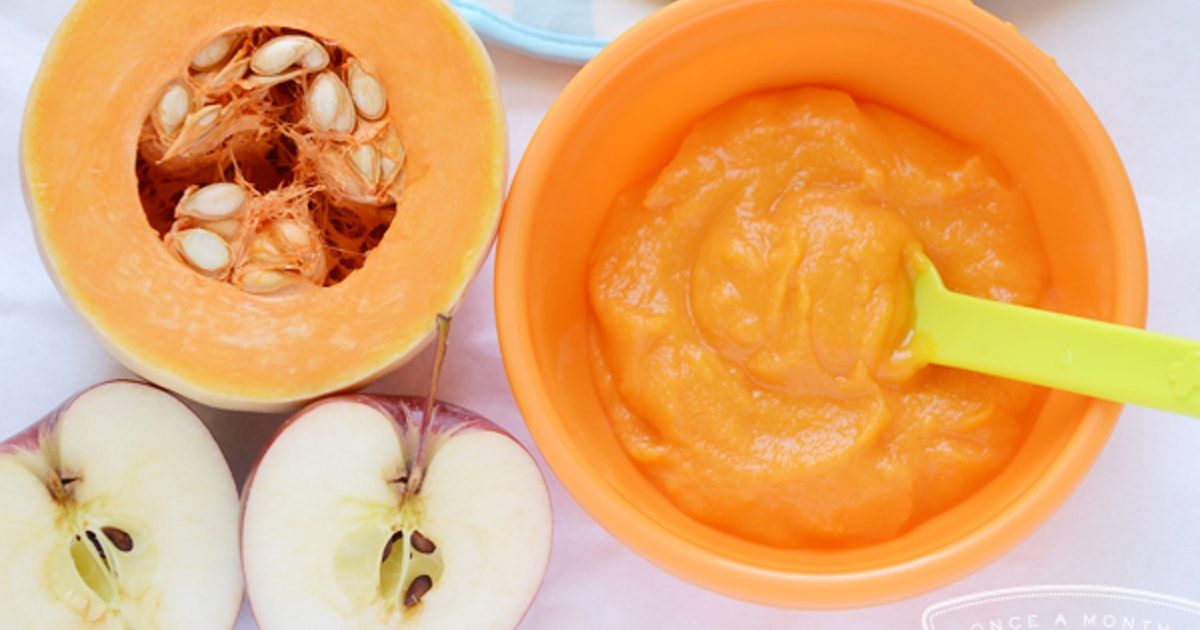
- Place an inch of water in a baking pan, then place squash halves "face" down in the pan. Check on water level while baking.
- Bake in a 400 degree oven for 40 minutes or until the "shell/skin" puckers and halves feel soft then scoop squash "meat" out of the shell.
- Place squash "meat" into your choice of appliance for pureeing and begin pureeing.
- Add water as necessary to achieve a smooth, thin consistency.
- You can also peel the squash, scoop out the seeds and then cut into chunks and boil/steam until tender (like when boiling potatoes for mashed potatoes) then follow steps 4 and 5.
Tips for making squash puree:
Buy a butternut squash that feels heavier than it should be for its size. One with a large neck and smaller bulb will have the smallest number of seeds and offer the most ‘meat’.
Is butternut squash good for babies?
Butternut squash is an excellent choice for weaning because young children tend to enjoy the mild, sweet flavour. It's also a really healthy choice - high in betacarotene, which helps support a healthy immune system, as well as B and C vitamins.
It's also a really healthy choice - high in betacarotene, which helps support a healthy immune system, as well as B and C vitamins.
Is butternut squash a stage 1 baby food?
Yes, you can offer butternut squash to you baby as soon as they are ready to start on solid foods. It's a good food to keep on the menu throughout the weaning process and, once your child is fully onto solid food, is a good side dish for toddlers.
You might also like...
- Baby weaning guide
- Baby food: Pea purée
- Baby food: Blueberry purée
Jessica Dady is Senior Content Editor at Goodto.com and has over 10 years of experience as a digital journalist, specialising in all things food, recipes, and SEO. From the best food hampers to cookbooks, from the best cake stands to baking sets, Jessica has a wealth of knowledge when it comes to must-have food products. A passionate baker, she spends much of her time creating celebration cakes for friends and family - particularly for her two lucky children.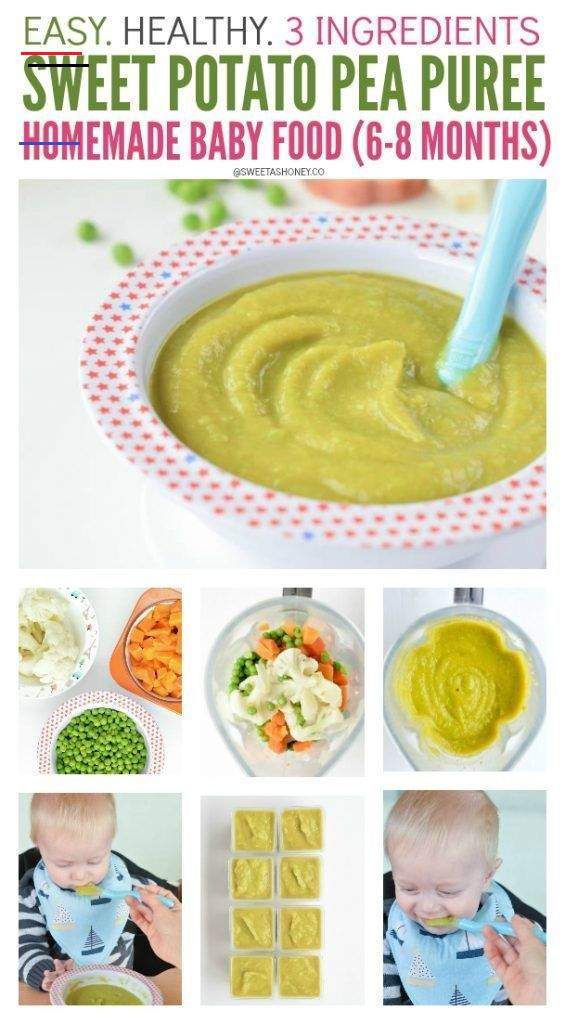
Pumpkin puree for babies, recipe - step by step recipe with photo. The author of the recipe Alexander is the director of Cookpad.
Alexander - director of Cookpad @kislenko
Moscow, Russia
Today we will tell you how to make pumpkin puree for babies. The recipe is useful to all mothers of babies from four months.
By the fifth month of life, the child does not have enough nutrients from mother's milk, and vegetable and fruit purees begin to be introduced into baby food.
Pumpkin puree for babies is suitable for a baby's first introduction to vegetables. It is not only tasty, but also helps to adjust the work of digestion, gives the baby material for growth and proper development. Pumpkin helps to form bones and muscles, contributes to the health of the eyes, nerves, stomach, intestines, heart, prevents anemia, improves children's sleep, strengthens the immune system.
Pumpkin puree is introduced into the children's diet after squash puree and cauliflower puree, which do not cause allergies. The baby should like the taste, color and aroma of pumpkin, because they are brighter than what he has already tried.
It is recommended to give pumpkin puree to a child at least three times a week (unless he has an allergy, which, to be fair, is very rare for pumpkin). At first, limit yourself to half a teaspoon, as the digestive system must get used to the new type of food.
Pumpkin puree can be combined with other vegetables or fruits: carrots, potatoes, apples, bananas, etc. Sugar can be added at your discretion, but pediatricians do not recommend doing this for at least a year. Better add sweet fruit. Pumpkin should be chosen young, weighing up to 3-5 kg. It is sweeter and juicier and easier to peel.
Morepopover#show mouseleave->popover#hide" >
Save this recipe for later.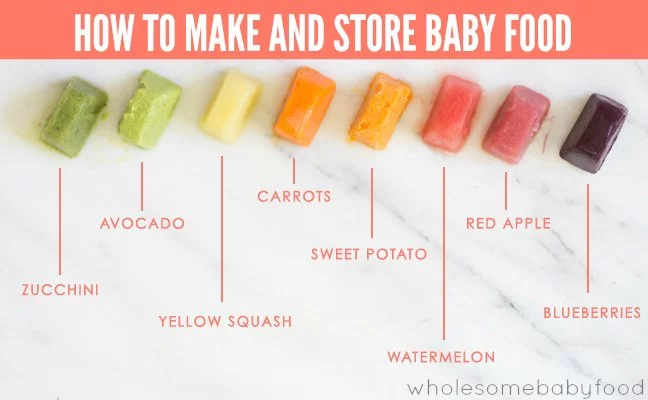
Add cooksnap
ShareShare
Ingredients
-
100 g pumpkin
How to cook
See how to cook this dishEmotions
Karina Putchenkova responded
Cooksnaps
Author
Alexander - director of Cookpad @kislenko
I'm participating in the Cookpad Awards 2022! And I invite you -> https://cookpad-konkurs. ru/award2022
ru/award2022
More recipes from the author
Adjarian Khachapuri
Banana fritters
Gates
Belgian waffles
Pumpkin puree recipe for homemade baby food
At the age of 4-5 months, parents of babies begin to introduce the first complementary foods to their babies, as at this time they are deficient in substances useful for a growing body, which are already in breast milk or mixtures. The digestive system of the baby is already ready to accept new food. Most often, vegetables are offered to the baby for the first acquaintance with a new food. Homemade baby pumpkin puree is very good for the first feeding for the baby. Pumpkin puree contains many useful trace elements (especially carotene), contains fiber. Pumpkin will attract the baby with its pleasant taste and bright color. How to cook pumpkin puree and how much to cook pumpkin for baby puree you will learn in this article.
Note!!! Pumpkin puree helps regulate digestion. And freshly squeezed juice relieves bloating, constipation, and also helps with inflammation of the urinary system.
Pumpkin for the first baby feeding is prepared very easily and quickly.
Contents
Preparation
- 20 minutes
Cooking time
- 20 minutes 3 Ingredients 0096
- Pumpkin 300 grams
- Water 2 cups
Output: 160 grams (2 80-gram baby food jars) pieces for a child (the larger the pumpkin is cut, the longer it will cook)
2. Next, put the pumpkin in a saucepan and pour water. Cook for about 20 minutes until the pumpkin becomes soft.
Cook for about 20 minutes until the pumpkin becomes soft.
Important!!! For children up to a year, it is better to cook a pumpkin longer, for older kids - you can cook it for less than 5-10 minutes.
3. When the pumpkin is cooked, cool and beat with a blender. If the gruel is too thick, you need to add the water in which the vegetable was cooked, or you can add just boiled water.
Important!!! For small children, the pumpkin must still be rubbed through a sieve in order to avoid getting large pieces when feeding.
4. You should end up with 2 servings. We put one portion in a jar of baby food, cool and put in the refrigerator. The second portion can be immediately given to the child.
Important!!! Before giving pumpkin puree to your baby for the first feeding, you need to make sure that the baby is not allergic to it. Therefore, you should introduce a new product to the crumbs a little bit, starting with a teaspoon.

It is best to make pumpkin puree for babies for 2 days. If you want to stock up on mashed potatoes for a week, then you need to cook more pumpkins, you also need to sterilize all jars and lids well, and bring the mashed potatoes to a boil before laying.
Baby pumpkin puree can also be used to make pumpkin rice porridge. The recipe can be viewed here.
You may be interested in reading the article "Rice and pumpkin porridge with your own hands." Read here...
Given that the pumpkin is large, it can be cleaned, cut, portioned into bags and frozen. The recipe for freezing pumpkin for the winter can be found here.
You might be interested in the article How to Freeze a Pumpkin for the Winter. Read here…
Pumpkin puree can be diluted with bananas, apples, carrots, potatoes, as well as other vegetables, fruits (provided that the child is not allergic to them).
We presented you with a very easy-to-prepare recipe for pumpkin puree for babies and told you how to cook pumpkin for the first feeding.